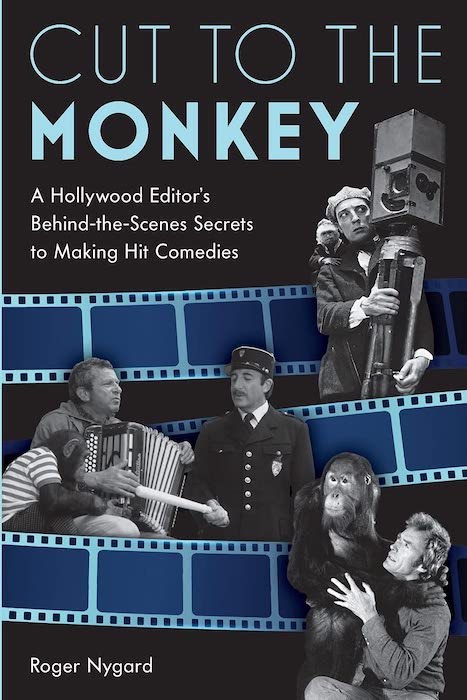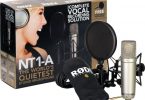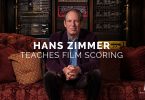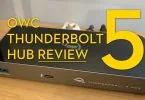
Cut To The Monkey: A Hollywood Editor’s Behind The Scenes Secrets to Making Hit Comedies, by editor and filmmaker Roger Nygard is one of my new favourite books on film editing.
Every editor, whether you’re interested in editing comedy or not, should read this book.
It is packed with practical editing tips and tricks as well as career building gems of wisdom.
It is well written and well edited, which (sadly) gives it a huge leg up over many other books on film editing out there, and, most importantly, it is funny.
If someone who claimed to be able to teach you about the nuances of editing comedy, couldn’t be funny, that would be a huge red flag.
Editors have different styles, attitudes, opinions and approaches.
Editors are people, not machines; we don’t just push buttons, we bring a lifetime of emotions and thoughts and experiences to every edit.
But what is crucial for comedy is that editors laugh in the right places. It also helps to smell nice and be a pleasant person to be around a lot.
– Roger Nygard, Cut To The Monkey
Cut To The Monkey – Book Review
Buy Cut To The Monkey on Amazon Global Stores
While the majority of my editorial hypotheses herein apply to both drama and comedy, with comedy, if your skills aren’t razor sharp, it’s obvious. Hence, the need for a dissection of comedy editing.
If somebody can edit comedy, they can probably also edit drama.
But not necessarily the reverse.
Typically, comedy series pay editors more than drama series, because good comedy editors are scarcer. It is a particular skill to be able to make the funniest version from a pile of footage.
– Editor Roger Nygard, Cut To The Monkey
Roger’s book weaves a deft balance of direct editorial insights and part autobiography – or at least a telling of his career path through the business of show – which has been broader than many editors, and this actually adds a further dimension to the scope and benefit of the book.
As a filmmaker, Roger Nygard is known for the feature film Suckers, and the documentaries Trekkies, and The Truth About Marriage. He has also directed TV series like The Office and The Bernie Mac Show.
His work as an editor includes Emmy-nominated episodes of Who Is America?, Veep, and Curb Your Enthusiasm. Recently he co-produced and edited the docu-series The Comedy Store, and currently he is editing The White House Plumbers.
As he’s worked with some hugely talented comedians and showrunners the book is filled to the gills with insights, quotes and funny stories from the likes of
- Larry David (Seinfeld, Curb Your Enthusiasm)
- Judd Apatow (Girls, The 40-Year-Old-Virgin, Bridesmaids)
- Alec Berg (Silicon Valley, Barry)
- Julia Louis-Dreyfus (Seinfeld, Veep)
- Mike Binder (Black or White, The Comedy Store)
- David Mandel (Veep, The White House Plumbers)
- Jeff Schaffer (The League, Dave)
- Krista Vernoff (Shameless, Grey’s Anatomy)
- and many others!
This adds a huge amount of insight and career experience to what could otherwise have been one man’s opinion.
What’s in the book?
Cut To The Monkey is an excellent book on editing because it covers quite a broad spectrum of topics from the nuance of what makes something funny to the step by step process in which Roger builds his ‘editors cut’, but does so at sufficient depth that editors of any calibre will be able to benefit from what Roger has to share.
Over 11 chapters Roger discusses the nature of comedy, how editors need to think and act, why comedy editors need to especially good at sound design, opens up his ‘bag of tricks’ and guides you through the process of how a TV episode of an improv-comedy show goes from a heap of raw footage to a finessed half-hour.
Along the way Roger has a ton of excellent advice to share on the business and diplomatic side of working as an editor, including interview techniques, how to answer specific questions, networking, crafting a resume and interacting with producers and directors.
Let me say it again, every editor should read this book!
Extra Depth – Writing, Legal and Sound
Chapters 4 (Editors Are Writers) and 5 (The Source of Inspiration) take an interesting and well written, detour down a scenic route on why editors should be writers and the nature of legal court cases in Hollywood (as experienced by Roger). In both instances making a compelling case for every editor learning both to write and stay out of court.
In the chapter focused on writing and story structure, and Roger would encourage everyone to try writing a script or story in some form, delivers a pretty solid condensation of what you’ll find in most screenwriting books, which lays a great foundation for reading more of those.
Even when writing about foundational or tangental topics, Roger keeps things engaging as he draws on his personal experiences and those of comedy legends who weigh in or illustrate the main points with stories and cautionary tales.
Chapter 8 – Sound Is King: Comedy Lives in the Soundtrack
A whole chapter dedicated to sound? What madness is this?
What if I told you sound is the most important part of editing, especially for comedy?
Film may be a visual medium, but comedy is in the performance, and performance lives in the sound.
– Roger Nygard, Cut To The Monkey
After I read the chapter on sound I made a note to myself: “I thought this book was great but it’s better then that. It’s essential.“
How to make a joke funnier – Interview with Roger Nygard
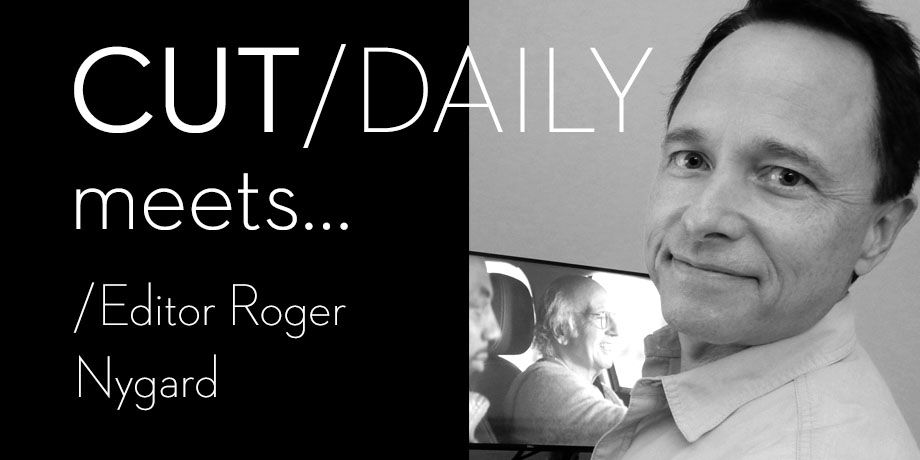
I interviewed Roger over on my other site – Cut/daily – and asked him some bonus questions about what to do to make a joke funnier. Here’s what he had to say:
Is there a way to ‘save’ a joke? Does improving the set up make the pay-off land better?
Absolutely. I diagram the ways jokes are improved, or saved, in my book.
For example, when a good joke is not landing, sometimes the first instinct is to blame the punchline. “We need to punch this up!“
But the problem is often a misfiring setup, which has not been presented well, cleanly, clearly, and/or concisely.
To fix it, remove the impediments between setup and punchline: tangents, mispronunciations, distractions, pauses, ums, uhs, you knows, lip smacks, bad sound, etc.
Then consider the timing of the exposition.
It often has to be adjusted, because you don’t want people to be thinking (trying to figure out the plot) when they should be laughing. Those activities happen in different parts of the brain.
You also have to make sure the audience is not ahead of you, predicting what is going to happen, or else the surprise you are cultivating will be undermined, and the laugh reduced.
Is there a way to make a joke ‘bigger’ – or is it just that, if it gets a bigger laugh than expected, to give it more breathing room?
I will quote show runner Alec Berg (Barry and Silicon Valley), who finds that building a laugh is similar to a scare in a horror movie. There is tension and release.
In comedy, he said filmmakers sometimes make the mistake of trying to keep too many laughs:
“There’s a sense that more laughs means more comedy. But an A-plus laugh is logarithmic. It’s not twice as good as a B-plus laugh. An A-plus laugh is ten times as good.
If you create a film that has four or five massive laughs, it’s a classic. If you make something that has one hundred B-plus laughs, it’s not as memorable.
Those big laughs are the ones that you have to curate. And sometimes that means not being funny for a stretch of time to build that tension.
Those are genre-defining laughs.”
5 Lessons on Comedy from Cut To The Monkey
While reading through Cut To The Monkey for this review I made note of about 20 places that I thought “Wow, that’s a great quote” I should put that in the review, but that would be a few too many.
So here are 5 quotes from the book that I hope illustrate its brilliance and deliver a valuable lesson on editing comedy, working as an editor and handling life in the suite.
Why Personality Matters
“An editor is somebody that you have to spend an enormous amount of time with,” Alex Berg said, “Comedy writing is the same. A lot of what you get hired for is: Do I want to spend hours and hours with this person?”
– Roger Nygard, Cut To The Monkey
I asked, “If an editor gets comedy, will you overlook his bad choice in shoes”
Alec nodded sagely “Yes.”
According to Steven Rasch, “Who you are is all important, because if you don’t finesse the director, producers or writers who come into your edit bay, you won’t be able to survive. Plus the back of your head has to look good, because that’s all they see.”
On Getting Hired
When I asked Julia Louis-Dreyfus how she knows who to hire, she said, “Word of mouth, baby.” Check references. In a meeting, if somebody asks me if I’m good, I say, “Call anybody I’ve worked with and ask them who’s the best editor they’ve ever worked with.”
When I suggest that they laugh. And sometimes they call. Who an editor has worked with is more important than a reel.
– Roger Nygard, Cut To The Monkey
Editing Tricks from Roger’s Bag of Tricks
- Nail the set ups to the joke: “must be concise, well-annunciated and clear.“
- ADR is essential to add new dialogue to fix things on the backs of heads
- Always show every frame of the punch line
- Faster is funnier (see Chapter 7 on pace)
- Perform an “Air pass” to remove pauses in performances.
- Edit out all ‘Word baggage’ (ums, ahs, you knows, extra words, lip smacks etc.)
- Create a clear set up and get to the punch line as fast as possible.
Where possible, put the funniest part of a line at the end of the sentence. Often you will find the biggest laugh is buried somewhere before the end.
Put the biggest moment at the end of the sentence, and the end of the scene, and the end of the act. Don’t go on after the best part.
After the punch line, it’s time for a new bit, or a new set up.
– Roger Nygard, Cut To The Monkey
On being Open and Collaborative
When a producer asks you to try something, never offer resistance. Remember the collaborative rule of improv comedy: “yes, and…” Saying “no” is a dead end.
No matter what, the answer is, “Okay, let’s try that.” Always explore the idea. First make sure you fully understand what is being asked, what exactly is not working in the producer’s mind, what is bumping up against them.
Producers want to try new variations as quickly as possible. You may end up right back where you started. Often you will be proven right, but sometimes they have to see for themselves how you invented the wheel.
Get them out of the room faster by giving them what they want. Take what they hand you and go with it. Doing anything else is stalling the process.
– Roger Nygard, Cut To The Monkey
The Magic Email
This is an email that works. I fall for it every time. Willingly. This example is similar to some I have received:
Dear Roger,
You have edited some of my favourite shows, such as Curb and Veep, and I really respect the work that you do. I am a trailer editor looking to transition to scripted as an assistant editor or apprentice editor, and your advice would be invaluable. I was wondering if I could ask you a couple of questions? Would you be open to a phone call or video chat sometime?
Yes of course I would be open! Why? Because this person followed the magic formula: start with praise, then a very short self-description, then a call to action – ask for a phone conversation. Don’t ask to meet for coffee. That’s too much time investment. Ask for advice. Just a few short questions.
– Roger Nygard, Cut To The Monkey

